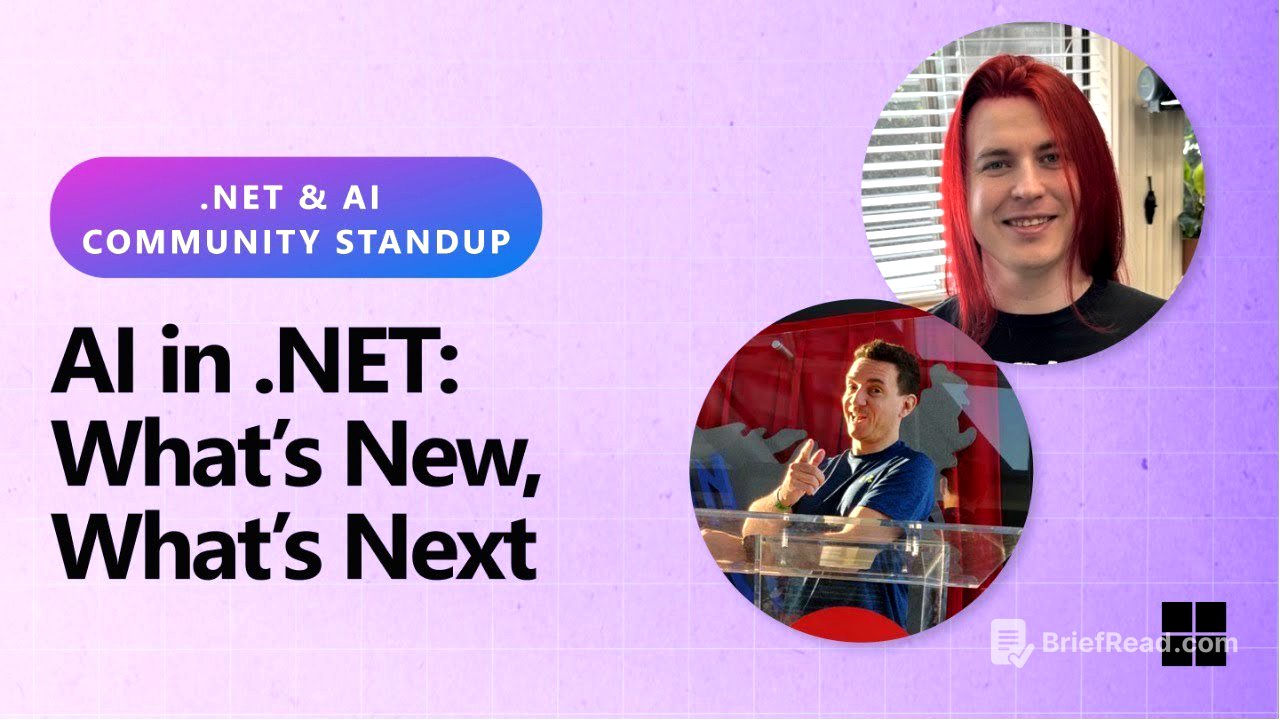TLDR;
This video features Bruno Capuano and Tanner Gooding discussing advancements in .NET, particularly focusing on tensors and numeric support. They highlight the new Tensor Span API, improvements in generic math, and SIMD acceleration. The conversation covers the evolution of these features, their applications in AI, ML, and general-purpose computing, and how they enhance performance across different hardware platforms.
- Introduction of Tensor Span API for multi-dimensional data.
- Improvements in generic math and SIMD acceleration in .NET.
- Discussion on the evolution and applications of tensors in various computing scenarios.
Introduction and Announcements [1:38]
Bruno Capuano welcomes Tanner Gooding to discuss tensors and related topics in .NET. Bruno shares two announcements: the "Awesome GitHub Compilers Customization" repo, which collects custom instructions and prompt engineering resources for GitHub Copilot, and an open-source space battle game built using generative AI for .NET. The game's code is available in the generative AI repo and can run with local models like Llama.
Tensors and .NET: An Overview [6:58]
Tanner discusses the iterative process of adding new features to .NET, noting that machine learning and AI are becoming increasingly important. He explains that .NET initially provided bindings over existing libraries like PyTorch through projects like TorchSharp. However, to better align with .NET idioms, the team began developing native .NET solutions, focusing on interchange types and contracts similar to the introduction of Span
The Evolution of Tensor Support in .NET [11:54]
Tanner explains the concept of tensors as fundamentally arrays with data and shape. He introduces Tensor Span
Use Cases and Market for Tensors [19:26]
Tanner addresses the perception that tensors are only for niche applications, clarifying that they are an abstraction over data used in various common scenarios like image processing and text manipulation. He argues that tensors underpin many operations, such as tokenization in compilers and search functions in text editors. Tensor Span
Roadmap and Community Engagement [26:05]
Tanner outlines the incremental improvements to numeric and math support in .NET over the years, including the introduction of Span
Code Examples and Performance [36:21]
Tanner presents code examples demonstrating different approaches to summing values in an input, from a naive loop to loop unrolling and direct SIMD usage. He highlights how Tensor Primitives can compress complex code into a single line, offering significant performance improvements. Benchmarks show that while smaller data sets may not exhibit noticeable differences, larger data sets benefit significantly from Tensor Primitives due to optimized handling of cache size and hardware capabilities.
Working with Shaped Data and Slices [42:57]
Tanner explains how to work with non-contiguous, shaped data using Tensor Span
Resources and Community Support [49:51]
Tanner shares resources for finding implementations and engaging with the .NET community, including source.dot.net, GitHub, the C# Community Discord, and the .NET Evolution Discord. He encourages users to report bugs, suggest improvements, and seek expert advice through these channels.
Custom Structs and Language Team Collaboration [53:39]
Tanner confirms that Tensor Span
TensorFlow Bindings and Community Contributions [57:59]
Tanner explains why the .NET team has not created official bindings for TensorFlow, citing the library's evolving nature and support policies. He emphasizes that community members are welcome to create their own bindings for any library, and successful projects will gain adoption. He uses the OpenCV libraries as an example of a popular community-driven project.








